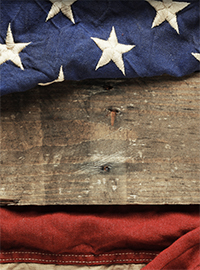| Mexican Bloodshed Affirms Value of 2nd Amendment |
 |
|
By Timothy H. Lee
Thursday, November 14 2019 |
"We’ve never seen such a brazen attack on U.S. citizens." That was the disquieting observation of security expert and University of San Diego professor David Shirk, referring to last week’s barbaric massacre of three women and six children by drug cartel gunmen just south of the United States-Mexico border. For anyone previously unalarmed by the escalating bloodshed next door, the cruel ambush of Americans served as a wake-up call. It should also disabuse Americans of any assumption that we’re immune from similar violence or that it isn’t closer than we’d prefer to think. But more broadly, Mexico and its hellish violence offer a cautionary tale about the danger of gun control and disarming of a citizenry. Writing recently in The Wall Street Journal, Dr. John Lott Jr. explained how Mexico’s recordbreaking violence has occurred over precisely the same period in which it imposed some of the world’s strictest firearm possession restrictions: Its gun laws are among the least permissive in the world. For decades Mexico has had only one gun store in the entire country, a military-run establishment in Mexico City. The store’s prices are very expensive, and the most powerful rifle that you can buy there is a .22 caliber… Getting permission to purchase a gun is a feat in itself. Background checks take six months to complete and require fingerprints and an evaluation of the buyer’s employment history. Only 1% of Mexicans possess a license to own a firearm. But here’s what makes Mexico’s experience particularly instructive for Americans. Mexico hasn’t always maintained such strict firearm possession limits. If it had, perhaps its violence could be rationalized as something characteristic of the nation or its history. Rather, it was only in 1971 that Mexico amended its constitution to cede complete control over gun possession to its federal government. Prior to that amendment, Mexicans enjoyed a right to keep and bear arms. What’s most instructive is that Mexico’s murder rate has doubled since that amendment, reaching yet another record high last year. Today, its murder rate is six times that of the U.S. per capita. So much for gun control. Meanwhile, we’ve witnessed the opposite dynamic over recent decades in the U.S. Specifically, the American murder rate has plummeted approximately 50% since 1990, the same period during which private firearm possession skyrocketed, the number of states allowing concealed carry went from single digits to nearly 50, the so-called “assault weapons” federal ban expired and the U.S. Supreme Court finally affirmed that the Second Amendment protects an individual right to keep and bear arms. Thus, relaxation of firearm possession restrictions and enormous increases in gun possession in the U.S. coincided with plummeting murder rates, whereas tighter firearm possession restrictions and elimination of access in Mexico coincided with exploding murder rates. And that relationship isn’t unique to just Mexico vis-à-vis the United States. Other nations across the globe provide similar lessons. Switzerland’s firearm possession rates stand second only to the U.S., for example, but its murder rate is almost nonexistent. In contrast, nations like Brazil and Russia have maintained strict gun control laws, yet suffer murder rates multiple times that of the U.S. and other nations with higher legal possession rates. The inescapable takeaway is that If gun control worked, then Mexico would be one of the world’s safest nations, not one of its most murderous, and its rate of violence would’ve declined since 1971, not doubled. And if guns were the problem, Switzerland and the U.S. would be among the world’s most dangerous nations, not among its safest. Fortunately, the Second Amendment provides a bulwark against the sort of government gun prohibitions that Mexico imposed nearly fifty years ago. But even that bulwark is only as good as the government officials willing to rightfully respect it. Regardless, Mexico’s descent into record violence after going down the path of counterproductive gun control should serve as an instructive example for Americans against that course. |
Related Articles : |
























